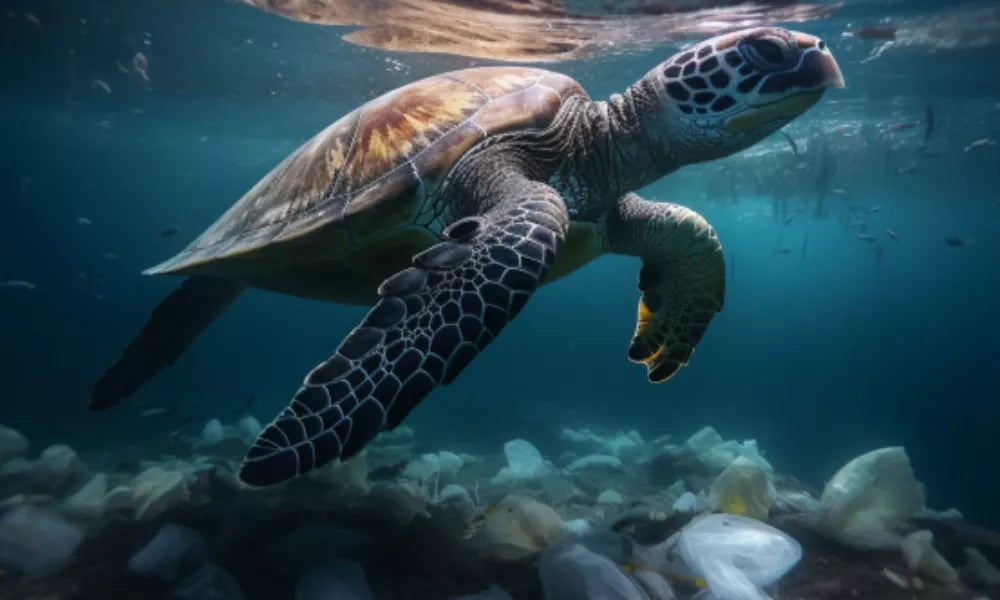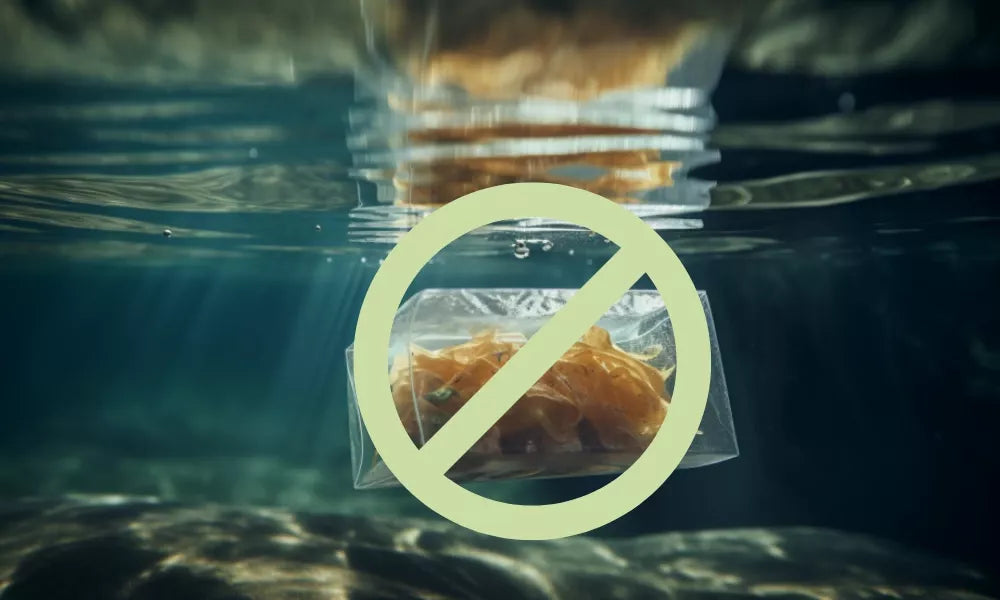What is marine pollution?
Marine pollution refers to the deterioration of the quality of sea water due to the introduction of pollutants such as chemicals, plastic, waste and oil. This pollution can be caused naturally or by human activities. Marine pollution has negative impacts on the environment, wildlife and human health as it destroys habitats, disrupts the marine ecosystem and causes loss of biodiversity.
How many animals die each year from plastic waste in the sea?
It is difficult to give exact figures as the number of animals that die from plastic waste in the ocean is not precisely recorded. However, it is estimated that at least 100,000 marine mammals and one million seabirds die each year from eating plastic or becoming entangled in plastic waste . However, the actual number could be much higher as many animals that die from plastic either rot in the ocean or wash up on remote shores and are thus not included in some estimates.
Types of Plastic in the Sea
Different types of plastic are found in the sea, each with different impacts on the environment. Macroplastics include larger pieces of plastic such as bottles, bags and fishing nets. These are easily visible and pose a great danger to marine animals, which can become entangled in them or swallow these pieces. Microplastics , on the other hand, are made up of small plastic particles less than 5 mm in size. These are created by the breakdown of larger pieces of plastic or are used as tiny plastic particles in cosmetics and cleaning products. Microplastics are particularly dangerous because they can be ingested by small marine organisms and thus enter the food chain. Another type is nurdles , small plastic pellets that are the raw material used to make plastic products. They often enter the sea during transport and are difficult to eliminate as they often mix with sand and gravel. Finally, there is fiberplastic , which is made up of microfibers from synthetic clothing and is released through washing. These fibers are a growing problem because they can be easily ingested by marine organisms and enter the food chain.
How many tons of plastic are in the sea?
It is estimated that about 8 million tons of plastic waste enter the oceans every year. According to a recent estimate, there are about 150 million tons of plastic in the world's oceans in total. These figures vary depending on the estimate, as it is difficult to determine the exact amount of plastic waste in the oceans.
How does plastic get into the sea?
Plastic enters the ocean in several ways. Direct discharge occurs when plastic waste is intentionally or inadvertently thrown directly into the ocean, either through careless behavior on beaches and coastal areas. Rivers and canals also play a significant role, as a large proportion of plastic enters the ocean via these routes, especially in countries with inadequate waste management. Ship waste is another source: cargo ships and fishing vessels contribute significantly to marine pollution by intentionally or accidentally throwing plastic waste overboard. Finally, plastic waste can also enter the ocean via storm drains. During heavy rainfall, plastic waste is washed from land into sewers and drains.

Impact of marine pollution on the environment
The effects of marine pollution are diverse and devastating. Pollution destroys important marine habitats such as coral reefs and mangrove forests, which are crucial for the biodiversity and survival of many marine species. Plastic particles are ingested by marine organisms and thus enter the food chain, causing poisoning and health problems in animals and ultimately humans. Many marine animals mistake plastic for food or become entangled in larger pieces of plastic, which can lead to injury, suffocation and death. In addition, plastic often contains harmful chemicals that can be released into the environment and harm marine organisms and ecosystems.
measures to combat marine pollution
Several measures are needed to combat marine pollution. Improving waste management and implementing recycling programs can prevent plastic waste from entering the environment. Stricter laws and regulations to reduce plastic production and consumption and combat illegal dumping are also needed. Public outreach and education can help raise awareness of marine pollution issues and encourage more environmentally conscious behavior. Finally, promoting research and innovation is important to develop new materials and technologies that are more environmentally friendly and can reduce plastic pollution. By combining these measures, we can help reduce marine pollution and protect the health of our oceans.












Leave a comment
This site is protected by hCaptcha and the hCaptcha Privacy Policy and Terms of Service apply.